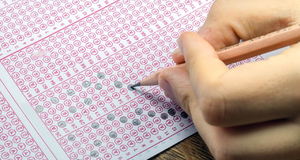The Cost of For-Profit Education: How Much is Your Degree Really Worth?
By
2015, Vol. 7 No. 03 | pg. 3/3 | « ConclusionThere are a lot of institutions of higher education operating in the United States which may allegedly engage in predatory practices in terms of attracting students in programs that provide little value in terms of gainful employment. As a result, many graduates, who attended poor performing programs using federal and private financial aid, are left with vast amounts of debt, much of which may be unpaid (Beaver, 2012, Stiglitz, 2013). The U.S. Department of Education is intending to create a more rigorous framework of accountability and transparency which would make institutions of post-secondary higher education ineligible to offer student financial assistance to their students as authorized under Title IV of the Higher Education Act of 1965 (U.S. Department of Education, 2014). On March 14, 2014, the U.S. Department of Education proposed regulations through a Notice of Proposed Rulemaking providing measures quantifying the establishment of certification criteria for such financial aid eligibility. The proposed regulations may affect both private and public, for-profit and not-for-profit institutions. This is not new however, as the U.S. Department of Education attempted to enact similar regulations in 2011 which were stricken down in the judicial system after appealed by a large opposing advocacy group representing 1,400 career sector colleges and universities nationwide, the Association of Private Sector Colleges and Universities. According to the Association of Private Sector Colleges and Universities (2014a), such regulations which seem very similar to the regulations of 2011 may have unintended consequences for a lot of students who may otherwise not be able to pursue post-secondary career education and/or training. A large number of these students are minority students, veterans, or otherwise at-risk students. Furthermore, a lack of available skilled workers, claims the Association of Private Sector Colleges and Universities (2014a), may also be a result of restricting access to such programs – most of the programs offered by its member institutions are not readily available at traditional public colleges and universities.Hence, an argument can be made that due to the imposition of federal regulations using benchmarks which may not be able to be quantified to the satisfaction of all stakeholders, including possibly from a legal standpoint, an issue of access to higher education for many students will again be on the forefront of the expected battle for either more or less involvement of the federal government in the state of education in the country. ReferencesAmerican Council on Education. (2014). ED releases new draft rules for career education programs. Retrieved from http://www.acenet.edu/news-room/Pages/ED-Releases-New-Draft-Rules-for-Career-Education-Programs.aspx Association of Private Sector Colleges and Universities. (2014a). About APSCU. Retrieved from http://www.career.org/about/ Association of Private Sector Colleges and Universities. (2014b). Act now to preserve higher education access and opportunity. Retrieved from http://apscu.org/policy-and-issues/grassroots/takeaction/index.cfm Bailey, T., Badway, N., & Gumport, P. J. (2001). For-profit higher education and community colleges. National Center for Postsecondary Improvement: Palo Alto, CA. Beaver, W. (2012). Fraud in for-profit higher education.Society,49(3), 274-278. Blumenstyk, G., & Huckabee, C. (2012). Judge's ruling on 'gainful employment' gives each side something to cheer. The Chronicle of Higher Education. Retrieved from https://chronicle.com/article/Ruling-on-Gainful-Employment/132737 California Association of Private Postsecondary Schools. (2012). APSCU on appellate court ruling. Retrieved from http://www.cappsonline.org/news/1203-apscu-on-appellate-court-ruling Cellini, S. R. (2010). Financial aid and for-profit colleges: does aid encourage entry? Journal of Policy Analysis and Management, 29(3), 526-552. Cellini, S. R. (2012). For-profit higher education: an assessment of costs and benefits.National Tax Journal,65(1), 153-180. Chung, A. S. (2012). Choice of for-profit college.Economics of Education Review,31(6), 1084-1101. Darolia, R. (2013). Integrity versus access: the effect of federal financial aid availability on postsecondary enrollment.Journal of Public Economics,106, 101-114. Denice, P. A. (2012). Does it pay to attend a for-profit college? Horizontal stratification in higher education (Doctoral dissertation, University of Washington). Hassler, R. P. (2006). The flogging of for-profit colleges. Academic Questions, 19(3), 63-74. John, E. P. S., Daun-Barnett, N., & Moronski-Chapman, K. M. (2013). Public policy and higher education: reframing strategies for preparation, access, and success. Routledge. Lansing, P., & Olsen, D. S. (2011). The (subsidized) business of higher education: an ethical analysis of federal funding in for-profit higher education.Mustang Journal of Accounting & Finance,1, 118-134. Liu, Y. T., & Belfield, C. R. (2014). The labor market returns to for-profit higher education: evidence for transfer students. A working Paper for the Center for Analysis of Postsecondary Education and Employment at the Teachers College, Columbia University. Reuters. (2014, March 13). Obama aims to tighten rules on for-profit career colleges. Retrieved from http://www.reuters.com/article/2014/03/14/us-usa-obama-training-idUSBREA2D03W20140314?feedType=RSS Stiglitz, J. E. (2013). Student debt and the crushing of the American dream. The New York Times. Retrieved from http://opinionator.blogs.nytimes.com/2013/05/12/student-debt-and-the-crushing-of-the-american-dream/?_php=true&_type=blogs&_r=0 Stratford, M. & Fain, P. (2013). Agree to disagree. Inside Higher Ed. Retrieved from http://www.insidehighered.com/news/2013/09/10/gainful-employment-negotatiors-face-long-odds-reaching-consensus Tierney, W. G. (2011). Too big to fail: The role of for-profit colleges and universities in American higher education.Change: The Magazine of Higher Learning,43(6), 27-32. U.S. Department of Education. (2014). Notice of proposed rulemaking. Retrieved from http://www2.ed.gov/policy/highered/reg/hearulemaking/2012/notice-proposed-rulemaking-march-14-2014.pdf U.S. Senate. (2012). For-profit higher education: the failure to safeguard the federal investment and ensure student success. Health, Education, Labor and Pensions (HELP) committee report. Retrieved from http://www.help.senate.gov/imo/media/for_profit_report/PartI-PartIII-SelectedAppendixes.pdf Wilson, R. (2010). For-profit colleges change higher education’s landscape. The Chronicle of Higher Education, 56(22), 1-19.
Suggested Reading from Inquiries Journal
Inquiries Journal provides undergraduate and graduate students around the world a platform for the wide dissemination of academic work over a range of core disciplines. Representing the work of students from hundreds of institutions around the globe, Inquiries Journal's large database of academic articles is completely free. Learn more | Blog | Submit Latest in Education |


















